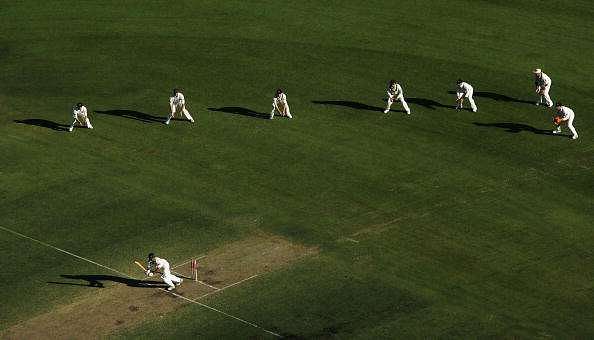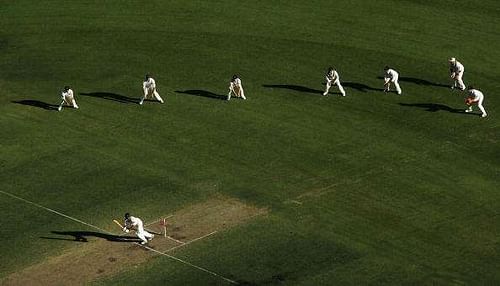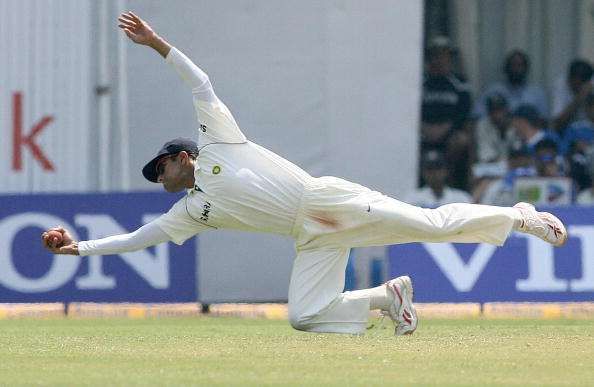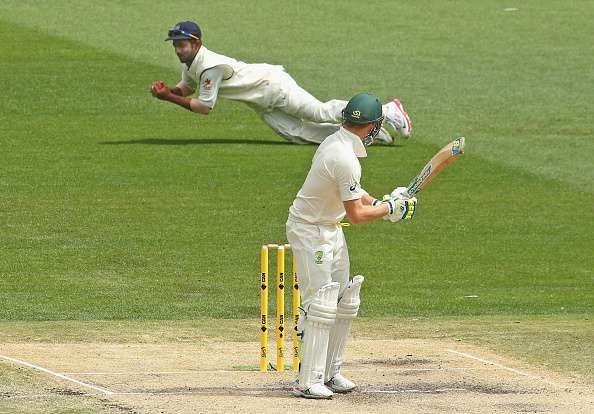
Deciphering the fielding positions in Cricket: Slip

Since the inception of cricket, one of the most traditional fielding positions in the game is the slip. It has been into existence ever since and still remains a very important position. Whether it’s a Test match or an ODI or even a T20 for that matter, slip fielders can always be seen stationed during most phases of the game.
A slip position lies in the area behind the batsman and besides the wicket keeper towards the off-side. It is not limited to just one fielder but there can be multiple slip fielders extending up to 5 or 6 at a time. The fielders at slip are named as the 1st slip, 2nd slip and so on starting from the one right most near the wicket-keeper for a right-handed batsman and the whole area comprising of the fielders in that region is known as the slip cordon.
The name of the slip region is supposedly derived from the time when the fielders started standing next to the keeper in the anticipation of any slip (mistake) from the batsmen. Hence, in due course, the fielding position itself was termed as the slip.
Unlike others, the setting of slip is an attacking position and not meant for saving runs as the batsman usually won’t intend to score runs in that region. It is a wicket-taking area where most catches are held when the batsman edges the ball. Compared to all other positions, slips are the most important wicket-fetching regions.
It comes into play largely when the bowler, who is taking the ball away from the batsman, is in operation. A slight movement away from the batsman can trap him in leaning into the shot which forces an outside edge towards the slips.
It is a unique fielding position as the slip fielder remains stationary when the bowler delivers whereas the fielders at most other positions would charge towards the batsman as the bowler runs in. Therefore, slip fielding is not easy as an immense amount of concentration is required to gaze at the outside edge of the bat at all times and there is no guarantee when the ball might fly towards the slip.
Generally, the number of slip fielders symbolizes the domination of the fielding side in the game. The more the slips, the more the chances that the fielding team is in the driving seat.
With a sizeable amount of runs on the board, the captain can afford to have a number of fielders in the slip cordon as happened once in an ODI against Zimbabwe when Australia employed all the 9 fielders in the slips which became a very famous picture in cricket.
Best fielders at slip

Over the years, there have been several combinations of slip fielders and bowlers who have hunted in pairs. There have been fielders who stood at slip for hours for particular bowlers and got a measure of all the tricks that the bowler had on offer and became pretty successful combinations.
Such renowned pairs were Rahul Dravid-Anil Kumble, Mark Waugh-Shane Warne, Mahela Jayawardene-Muttiah Muralitharan and Graeme Smith-Dale Steyn. Interestingly, most of the successful slip-fielders were also great batsmen who applied their skill of concentrating during batting into slip fielding too.
Rahul Dravid was perhaps the best fielder at slip because of the fact that he stood there mostly for the spinners like Anil Kumble and Harbhajan Singh. Standing close to the batsman is one of the hardest jobs in the game as the reaction time is very less and quick reflexes are essential which the legendary Indian was a master at. He also holds the record for most number of catches in Tests having a total of 210 catches to his name, most of which came while fielding at slip.
Other notable mentions at slip fielding were Mark Taylor, Jacques Kallis, Stephen Fleming, VVS Laxman, Ricky Ponting and Brian Lara. Amongst all the greats, Shane Warne would be one of the few bowlers who were masterful at slip fielding.
Memorable moments of slip catching
A very famous occasion of slip catching occurred in the year 2010 when Muttiah Muralitharan claimed his 800th Test wicket as he got Pragyan Ojha out caught at the slip off the hands of Mahela Jayawardene. From around the wicket, he turned the ball away from Ojha who nicked the ball towards slip and Mahela dived to his left and marked the end of Murali’s illustrious Test career.
Also Read: Deciphering the fielding positions in Cricket: Backward Point
Another popular incident happened in the year 2008 when a young Ishant Sharma made life miserable for Ricky Ponting at Perth. The bowler kept pegging away outside the off stump and troubled Ponting with every delivery and ultimately got him out caught at first slip courtesy a catch by Rahul Dravid. Following which, India achieved one of the most celebrated victories in Test history.
Modern masters at slip

The tradition of slip fielding still holds ground in modern day cricket too as many fielders are rising in the hunt to join the elite list of great slip fielders. Currently, Steven Smith from Australia, Ajinkya Rahane from India, Hashim Amla from South Africa and Alastair Cook from England are making marks as specialists in the slip cordon.
Going by the pace at which the game is progressing these days, every fielding position is becoming challenging. The slip fielding today also demands agility just like any other run-saving position and is not just for catching.
Another variant of slip
The modern day cricket has popularized another adaptation of slip which is known as the leg slip. It is implemented on the opposite side of a traditional slip towards the leg side and behind the batsman. Although not too many shots are directed towards that region, yet it has proved to be an effective placement at times.
MS Dhoni is a big fan of having a leg slip and has successfully used it to grab the most uncertain wickets. Whenever there is some assistance from the pitch for the spinners, he uses the leg slip to get the batsman caught off the inside edge down the leg side marking it one of his many instinctive decisions.